My dearest reader, who doesn’t write,
I’ve been thinking lately about worlds underneath the world—Gaiman is wonderful for that, as of course, was Rowling. Clive Barker does that well with the parallel world of Ararat (of course, terrifyingly in his other books), and I suppose that is part of the framing of many zombie and other un-dead stories—the idea that there is another reality lurking right beneath the one in which we go about our lives. I really enjoy Latin American Magic Realism for the same reason—that there is magic right below the surface.
I wonder why this appeals to us?
Sometimes, this brings us back to the world we had when we were children exploring it for the first time, when it was all new and crystalline.
Sometimes, it just shatters the mundane, dull, inanity of this working day world which we find so numbing.
I don’t know about magic, and I don’t believe I have ever really gone looking for it.
I only know the reality of the world as I live in it, and it is as filled with wonder as a good cookie is filled with chips and nuts.
Let me give you an example:
I can sit at a table in Cootie Browns and watch the solidity of my glass,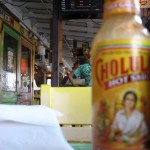 the table, the college students playing at wait staff, the Arsenal match on the telly. It is all quite pleasantly normal, and the Middle American wasteland of North Roan Street beyond it is frighteningly normal.
the table, the college students playing at wait staff, the Arsenal match on the telly. It is all quite pleasantly normal, and the Middle American wasteland of North Roan Street beyond it is frighteningly normal.
But if, after Cootie Browns, I turn left and go two blocks, suddenly I am in a different world.
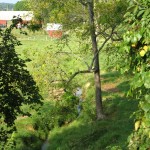 There is a creek slowly winding its way through the grass, cutting banks into the clay and stone, over-shadowed by tall trees. There are birds singing, and dragonflies buzzing in the sun and shadows. In one tree, I can see more bluebirds than I have ever seen at one time—at least a dozen.
There is a creek slowly winding its way through the grass, cutting banks into the clay and stone, over-shadowed by tall trees. There are birds singing, and dragonflies buzzing in the sun and shadows. In one tree, I can see more bluebirds than I have ever seen at one time—at least a dozen.
There is a well-tended but worn red barn, and in 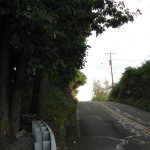 little knots in the grass, there are muddy white cows going about their lives, calmly unaware of the radical incongruity of being surrounded by a town.
little knots in the grass, there are muddy white cows going about their lives, calmly unaware of the radical incongruity of being surrounded by a town.
Stranger, however, is the little self-contained world that meets me if I turn right instead of left.
Behind the Honda dealer, and down the hill, in the shadow, there is a darker world, another city.
The first time I stumbled across it, it seemed like a little medieval village tucked away, out of view. There are car dealerships, shops and restaurants all around, but here are several blocks of trailers that form their own city within the city, with its own roads and rules. In the hollow, the street winds down into Spring City.
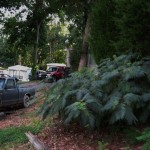 The street winds around, and turns off into gravel roads that become dead ends and driveways, little homes gathered together and looking inwards. By the dozens, these trailers are close by each other, and are shaded over by big trees, so that it always seems a little darker in the narrow twists and turns of Spring City. As you would expect, there are run down trailers and run down cars and run down people, but here and there you also see well-tended places, happily and tackily decorated with octopus’s gardens of planters and lawn jockeys. I have a friend who is a probation officer who has had clients here, but I suspect there are also folks here who have their own notion of order, and would handle minor disturbances on their own—not that the police are never called in.
The street winds around, and turns off into gravel roads that become dead ends and driveways, little homes gathered together and looking inwards. By the dozens, these trailers are close by each other, and are shaded over by big trees, so that it always seems a little darker in the narrow twists and turns of Spring City. As you would expect, there are run down trailers and run down cars and run down people, but here and there you also see well-tended places, happily and tackily decorated with octopus’s gardens of planters and lawn jockeys. I have a friend who is a probation officer who has had clients here, but I suspect there are also folks here who have their own notion of order, and would handle minor disturbances on their own—not that the police are never called in.
Children play, running or riding old bikes, and people sitting on their stoops watch me as I walk by, inhaling from their cigarettes and letting out the smoke without ever taking their eyes off me. I pass a big truck full of furniture, because every day somebody is moving in or moving out of Spring City.
I have been a lot of places. I can spot elephants in the stones of European cities, but I have also spotted live giraffes as I have driven to Knoxville, and completely new worlds walking through Johnson City, Tennessee.
My dreams often seem dull, because my waking world leaves me marveling.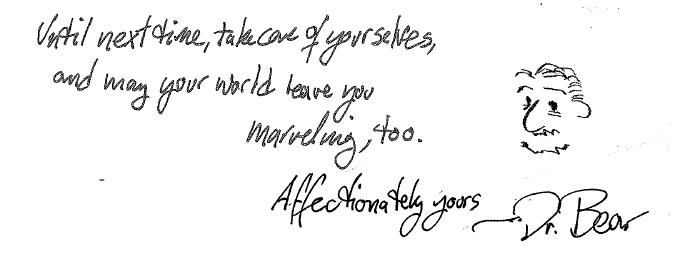

Only you could find beauty in trailers. And please don’t go walking up here taking pictures around people’s trailers. I would not recommend it.